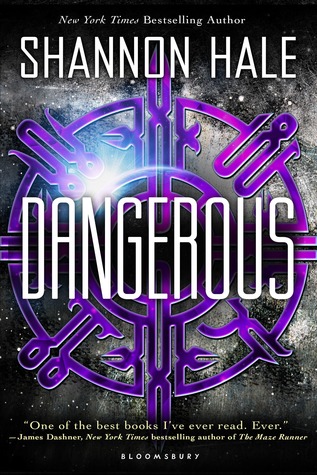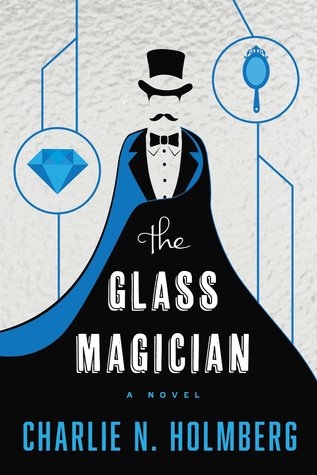As a writer of speculative fiction–in particular, speculative fiction for children and young adults–I’m all too aware that sometimes a stigma persists about genre fiction: that it’s not “real” (whatever that means), or that it’s meant purely as escapism. But as Ursula Le Guin points out in response to Kazuo Ishiguro’s fear that readers might mistake his latest novel for fantasy, “Fantasy is probably the oldest literary device for talking about reality.” The best speculative fiction does more than simply entertain: it teaches us something about ourselves and the world we inhabit. Last fall, while accepting a medal for medal for Distinguished Contribution to American Letters at the National Book Awards, Le Guin made this purpose even more explicit:
Hard times are coming, when we’ll be wanting the voices of writers who can see alternatives to how we live now, can see through our fear-stricken society and its obsessive technologies to other ways of being, and even imagine real grounds for hope. We’ll need writers who can remember freedom – poets, visionaries – realists of a larger reality.
The same is true of these 2104 young adult speculative finalists, all of which imagine a world unlike our own, but sharing core human sensibilities: love, fear, families, and the pull to be part of something bigger than yourself.
Bethany Wiggins’ Cured is the sequel to her post-apocalyptic novel Stung, a terrifying vision of a futuristic society where a bee plague swept through the country, and the vaccine meant to cure people instead turned them into feral monsters.
Jacqui–known as Jack to everyone else–has been hiding as a boy for the last several years, the only way to stay safe in a world where outside the Wall women have become a precious commodity, vulnerable to kidnap by the raiders that roam the outside world. But when Jacqui’s friends Fiona and Jonah Tarsis (heroes of the first book) set out to find their missing mother, who disappeared with Jacqui’s brother, Jacqui goes along to help them. It doesn’t take long before raiders are on their trail, and they are saved by a mysterious loner named Kevin. Even as Jacqui finds herself drawn to the new boy, his appearance raises more questions than she has answers for. Can she trust him?
I enjoyed Jacqui as a character, as a former coddled fat girl who finds herself struggling in her new world. I liked how she had turned her former softness into toughness, and I liked her struggle to hold onto compassion in a world that didn’t value it. It took me a while to figure out the complexities of this new world, as there isn’t a lot of backstory to ease new readers into the story. (If you haven’t read the first, or if it has been a while since you did so, a brush-up might be in order!). Ultimately a tense, fast-paced, often terrifying read.
***
Shannon Hale can be a dazzlingly diverse writer: in the last year, she’s brought out fairy-tale retellings for young children, a feisty princess book (an honorable mention at this year’s Association for Mormon Letters), and a science-fiction thriller, Dangerous. This novel is a departure from Hale’s usual style, so readers who go in expecting so mething along the lines of Princess Academy may be disappointed, but taken on it’s own merits it’s a fast-paced, intriguing story.
mething along the lines of Princess Academy may be disappointed, but taken on it’s own merits it’s a fast-paced, intriguing story.
Maisie Danger Brown (yes, “Danger” is her middle name), a fairly sheltered girl missing one arm, wins a spot at a top-notch science camp and soon finds herself in the midst of a world she never imagined, full of aliens, dangerous businessmen, and scientists of questionable ethics. The more Maisie learns, the more she comes to doubt the truth of what she’s been told. Soon, it’s up to Maisie and a team of unpredictably gifted children to save the world from an alien invasion–if they can do so without destroying each other first.
Maisie is a wonderful character: smart and funny and brave and not at all delimited by her handicap. I loved that she had a strong relationship with her parents, which seems to go against the norm in so much YA today. I did think some of the characterization was a bit unrealistic–I have a PhD in English and even *I* don’t know many people who quote poetry with the frequency some of the young scientists did. Don’t get me wrong, I love the poetry (some of them are perfect for the book) and I think scientists are equally capable of appreciating poetry, but I found it hard to believe that these kids were all so versed in it. (See what I did there?). But the book was full of Hale’s signature wit and humor and the science she included felt real to me. I liked the big dilemmas Maisie faced and if the romance didn’t always work for me, there were more than enough good things to make the story an enjoyable one.
***
I’m betraying my own biases here, but Kiersten White’s Illusions of Fate was my favorite of this year’s speculatives: I adore just about anything Victorian and historical fantasy may be my favorite genre (my own forthcoming book is set in 19th century England and Hungary–with magic). While it’s not technically “historical,” Illusions of Fate is set in a world clearly reminiscent to ours, with Albion standing in for England. The heroine,  Jessamin, is the daughter of an Albion by way of the colonies, come to Albion to study. But she quickly gets embroiled with the delightful Finn, drawn first to his sparkling hair, and later to his wit. He’s being threatened by the enigmatic Lord Downpike, and soon Jessamin finds herself under attack as well, using her wits to save herself and the boy she’s rapidly coming to love.
Jessamin, is the daughter of an Albion by way of the colonies, come to Albion to study. But she quickly gets embroiled with the delightful Finn, drawn first to his sparkling hair, and later to his wit. He’s being threatened by the enigmatic Lord Downpike, and soon Jessamin finds herself under attack as well, using her wits to save herself and the boy she’s rapidly coming to love.
I loved the world here–the world-building had a light touch, but I enjoyed it. White is wonderful at atmospheric writing: the bits of darkness in the story and the prose were lovely. Jessamin’s growing relationship with Finn was also delightful. If some of the magic wasn’t completely explained, and the story itself wrapped up quickly, this was still a charming read. (And for all the complaints of “trilogy-fatigue,” this is a standalone I wish wasn’t! I’d gladly read more of this world).
***
Ilima Todd’s Remake is an ambitious novel that’s drawn a fair amount of controversy, as it bravely tackles questions of gender identity in a way that’s not always popular with contemporary media. In this dystopian world, children are raised in batches instead of with families. When they reach age seventeen, they are allowed to choose a g ender identity and physical appearance. Nine (named for her batch number), has never truly understood her place in her world. While she enjoys her life and her friends, she finds herself longing for something ineffable. And in a batch of mostly dark-haired, dark-eyed people, her red hair, pale skin and freckles stand out. She’s not certain what she wants, and as her remaking date comes closer, she doesn’t know who she wants to be: boy or girl? But on the way to the remake facility, an accident leaves her stranded on a tropical island. A kind family takes her in, at risk to themselves, and as Nine comes to learn more about this family and the things they value, she starts to question the society she came from in fundamental ways.
ender identity and physical appearance. Nine (named for her batch number), has never truly understood her place in her world. While she enjoys her life and her friends, she finds herself longing for something ineffable. And in a batch of mostly dark-haired, dark-eyed people, her red hair, pale skin and freckles stand out. She’s not certain what she wants, and as her remaking date comes closer, she doesn’t know who she wants to be: boy or girl? But on the way to the remake facility, an accident leaves her stranded on a tropical island. A kind family takes her in, at risk to themselves, and as Nine comes to learn more about this family and the things they value, she starts to question the society she came from in fundamental ways.
While there were some world-building questions that were never entirely answered for me, the story is an emotionally engrossing one. The depictions of Nine’s new tropical home were lovely, and the romance was sweetly developed. I think most readers will appreciate Todd’s family-affirming message.
***
Charlie Holmberg’s The Glass Magician is another Victorian fantasy, a trend that I personally hope is on the uptick. This is the second in a series (The Paper Magician also came out last year, and book three, The Master Magician will be out in June). Easily the best thing about this series is Holmberg’s wonderful world, where magicians bond to a material (paper, glass, metal, etc.) and that bonding limits the use of their magic. In book one, Ceony was apprenticed (against her preference) to a paper ma gician, Magister Emery Thane (just the right amount of delightful and curmudgeonly) and saved him from an Excisioner, an illegal type of magician who uses the human body as their material.
gician, Magister Emery Thane (just the right amount of delightful and curmudgeonly) and saved him from an Excisioner, an illegal type of magician who uses the human body as their material.
In this sequel, Ceony has resumed her studies but is struggling with her seemingly one-sided attraction to Thane. And when new excisioners show up in town and target people Ceony cares about, what can she do but fight back? Though some of Ceony’s choices seem unnecessarily risky to me, I applaud her tenacity and loyalty. And there are so many things to enjoy here: Holmberg’s solution to Ceony’s increasingly dire predicaments is ingenious, and I do love the bitter-sweet romance between Ceony and Thane. The magic system fascinates me, and Ceony’s paper puppy, Fennel, might possibly be my favorite character after Emery Thane. While I think reading book one makes this book a bit easier to understand (we know where Emery and Ceony are coming from), it also works as a stand alone.
Continue reading at the original source →



